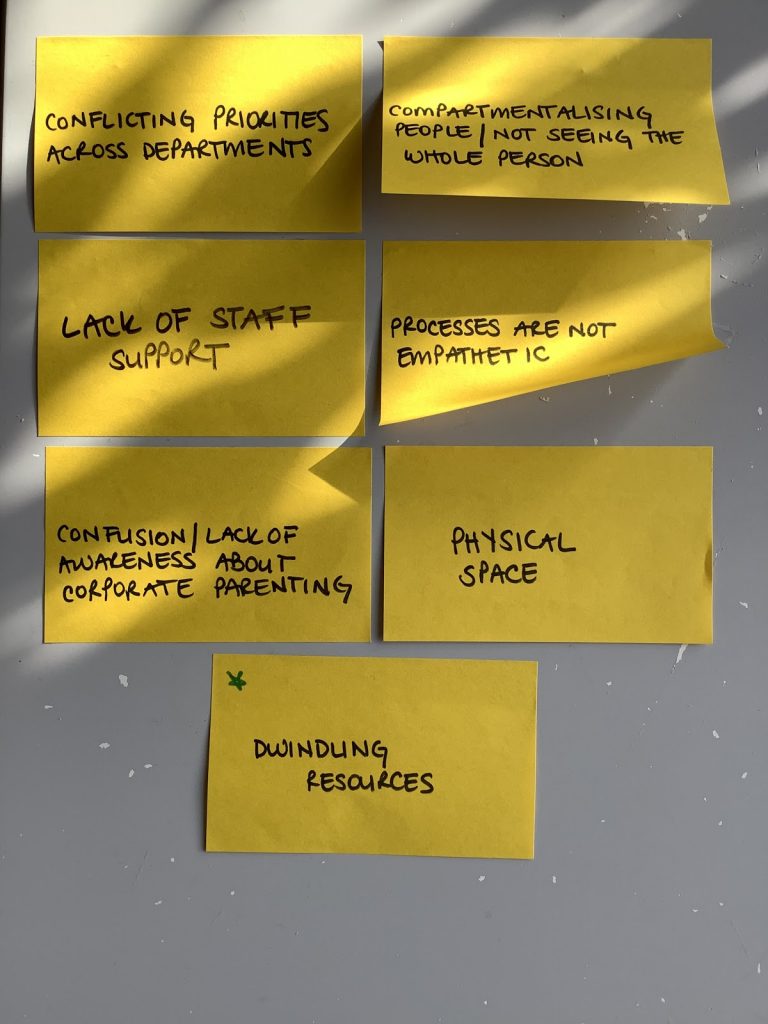Ideation
After analysing interview data, we regrouped for a day long ideation session. We started by reminding ourselves where we left off at the previous session with insights according to our question set. The data was synthesised, grouped and themed the insights ahead of the session.

We took time to talk about whether these still seemed right. Since we’d been away and there had been time to think, we asked ourselves if it seemed like there was anything missing from the themes we thought were emerging from interview data.
Who are we designing for?
With a set of themes to hand, we revisited the personas that had been created in the early days of Relationships First. With a table full of A3 personas, we started by knocking out the ones the group felt represented a relatively small portion of Falkirk staff as a whole. The conversation then focussed on which personas would be willing to make change, work in different ways and would likely be able to cause a ripple effect to other members of staff. We settled on Siobhan and Patsy.
User stories
We spent time with the personas to understand their strengths, weaknesses, likes and dislikes. Then we went back over the interview insights while we learned about writing user stories. Writing user stories feels alien at first. We all hesitated with our first cards and then got a flow. There were a few comments like, ‘Am I doing this right?, and we encouraged each other to just write and not think too hard about it at first, make as many cards as we wanted and that we’d whittle them down through clustering and eliminating stories that would be too difficult to work with.
Thinking hats
We narrowed down Siobhan and Patsy’s user stories so we could start brainstorming ideas for possible solutions for them. Using the Six Thinking Hats approach, we dreamed and imagined radical new futures.






